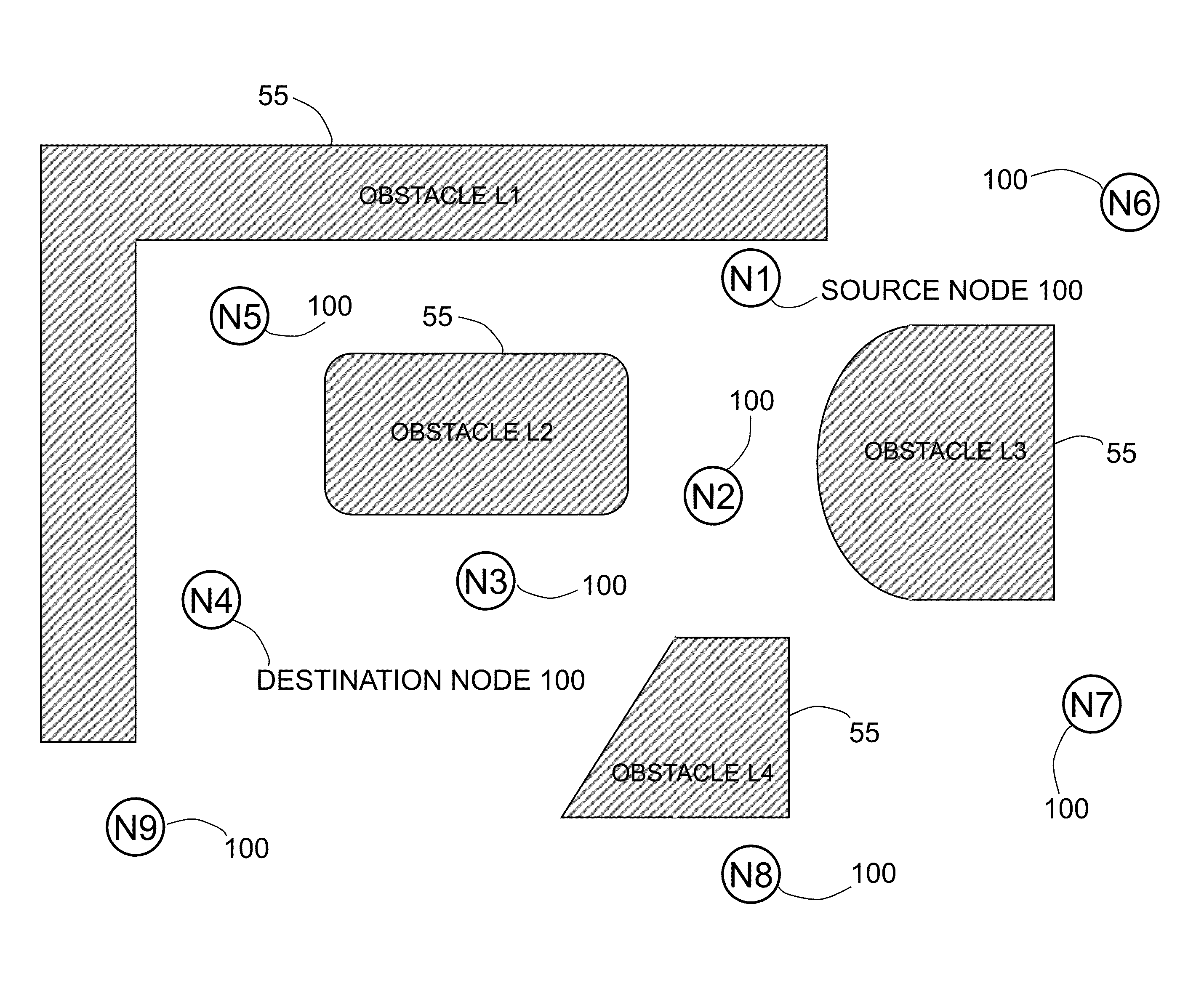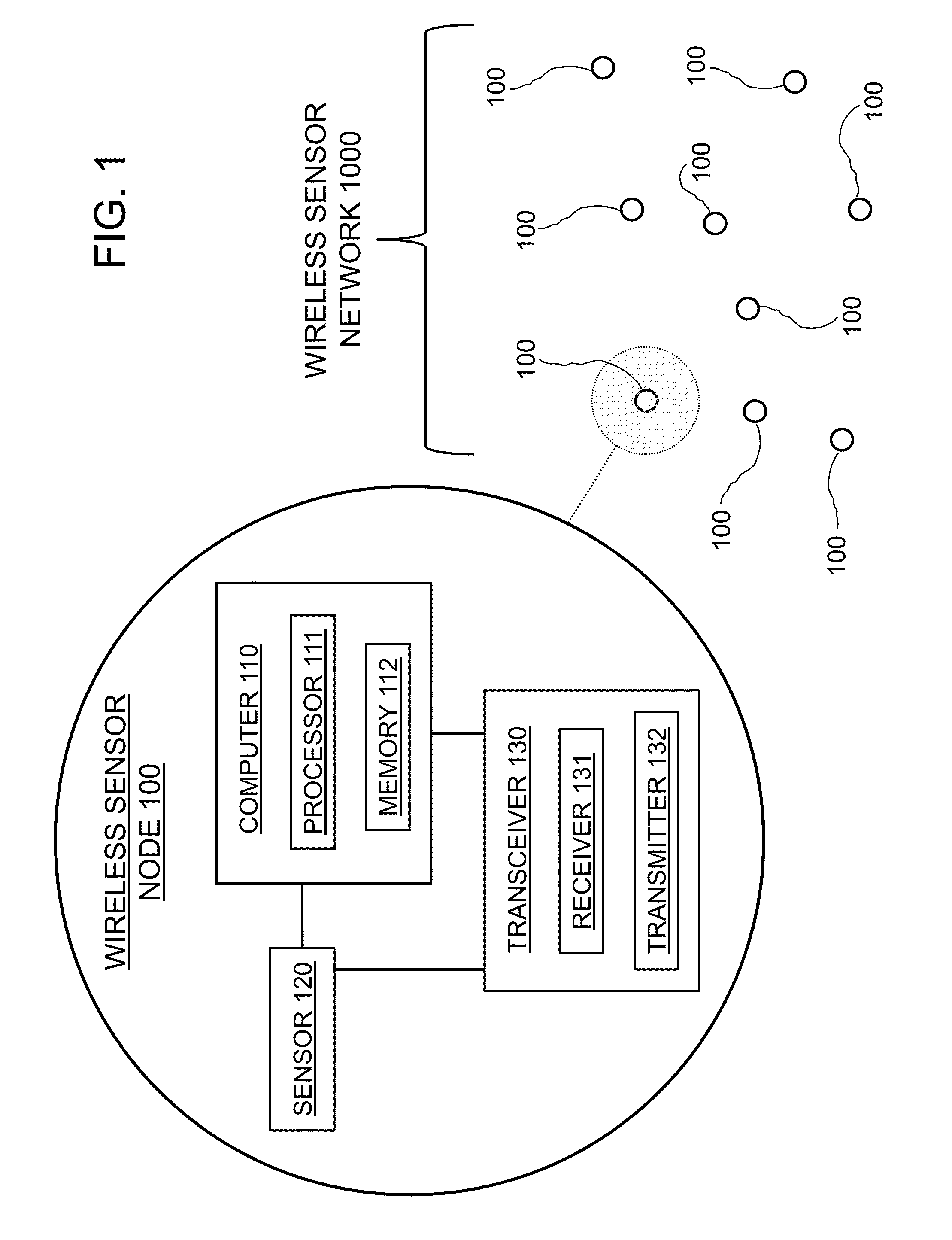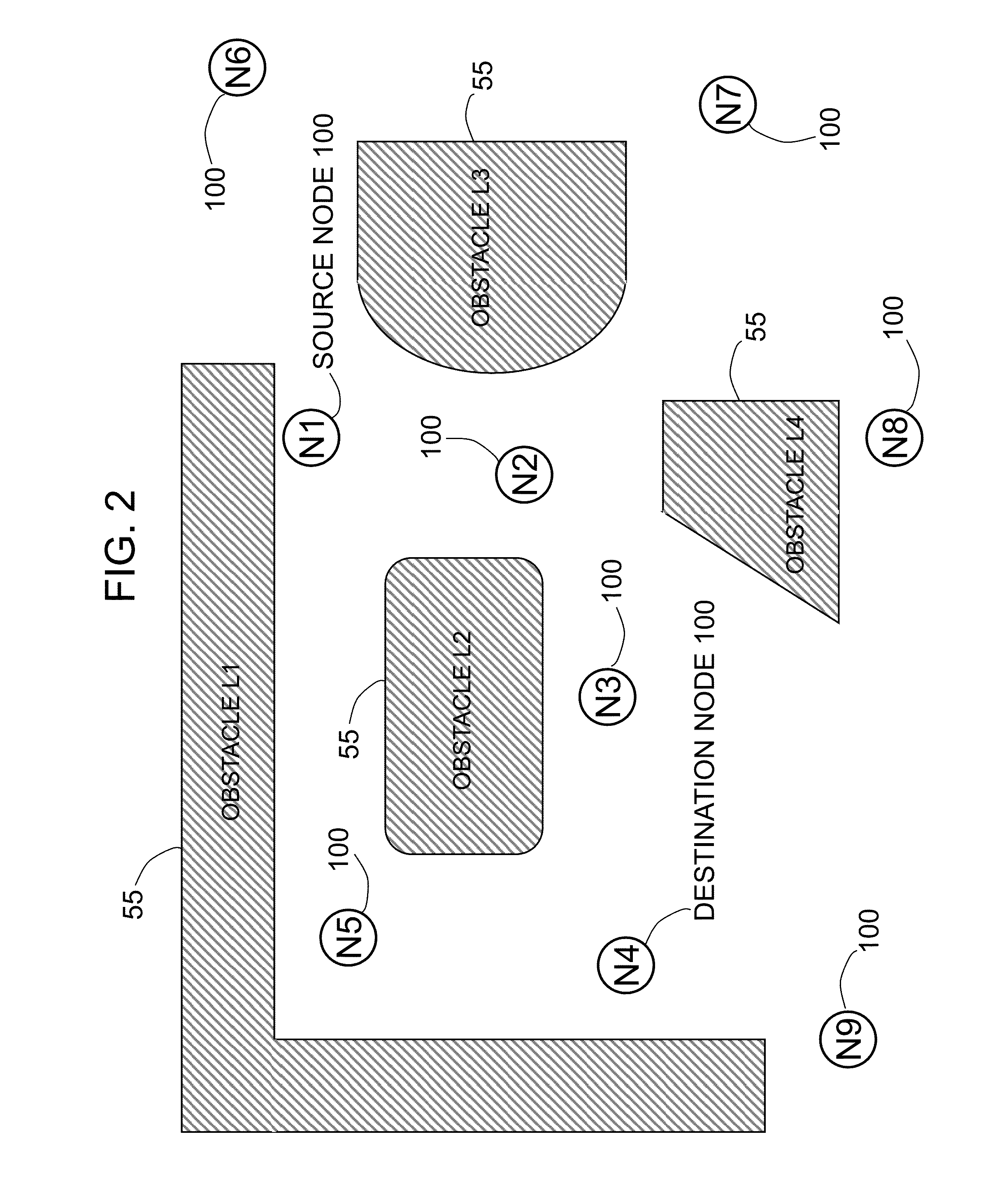Active-avoidance-based routing in a wireless ad hoc network
a wireless ad hoc network and active avoidance technology, applied in the field of wireless communication, can solve the problems that failure to communicate simply cannot be tolerated, ad hoc routing protocols based on the shortest route and the highest link quality may prove unsatisfactory for some applications
- Summary
- Abstract
- Description
- Claims
- Application Information
AI Technical Summary
Benefits of technology
Problems solved by technology
Method used
Image
Examples
Embodiment Construction
[0035]Referring now to FIG. 1, wireless sensor network 1000 includes many wireless router-and-sensor nodes 1000. Each node 100 includes an embedded computer 110 (which includes a processor 111 and a memory 112), at least one sensor 120, and a radio transceiver 130 (which includes a receiver 131 and a transmitter 132). Nodes 100 of wireless sensor network 1000 collaborate to accomplish one or more joint tasks such as environment monitoring and / or situation awareness and / or actuator control. In each node 100, computer 110, sensor(s) 120, and transceiver 130 are interconnected, typically through wiring.
[0036]It is understood by the ordinarily skilled artisan who reads this disclosure that power is supplied to the electronic components of each node 100. Power can be provided, for instance, via shipboard wiring, or via dc power supply (e.g., one or more batteries) that is embedded in or otherwise associated with a node 100. Recent literature has disclosed management of power consumption ...
PUM
 Login to View More
Login to View More Abstract
Description
Claims
Application Information
 Login to View More
Login to View More - R&D
- Intellectual Property
- Life Sciences
- Materials
- Tech Scout
- Unparalleled Data Quality
- Higher Quality Content
- 60% Fewer Hallucinations
Browse by: Latest US Patents, China's latest patents, Technical Efficacy Thesaurus, Application Domain, Technology Topic, Popular Technical Reports.
© 2025 PatSnap. All rights reserved.Legal|Privacy policy|Modern Slavery Act Transparency Statement|Sitemap|About US| Contact US: help@patsnap.com



